18 common garden pests and how to treat them
Protect your patch from troublesome critters
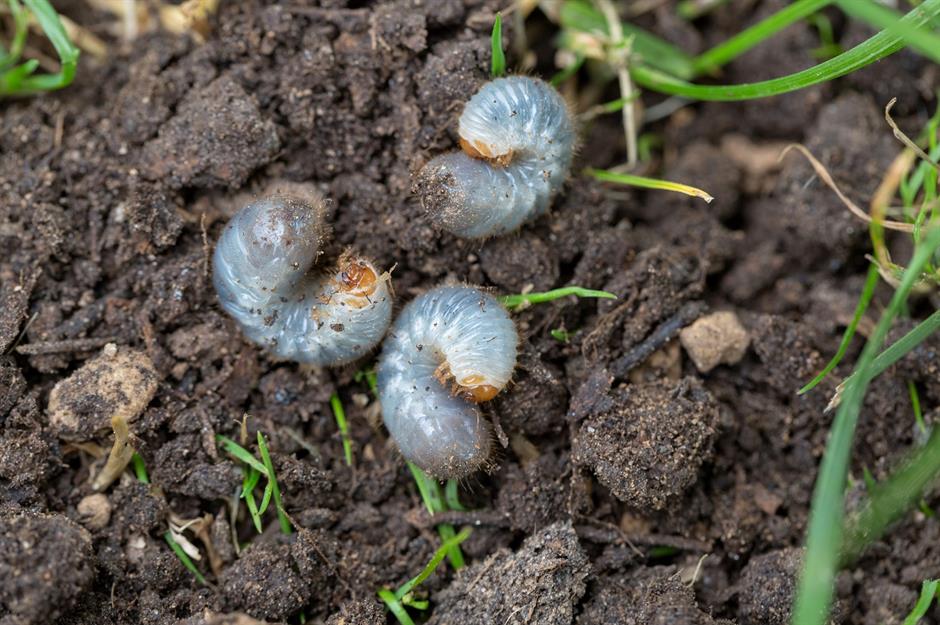
Our gardens are living, breathing ecosystems and we share our lawns and flowerbeds with a myriad of creatures. For the most part, this abundance of wildlife is good news for our gardens, but while you'll want to encourage some critters, you'll want to scare others away.
From slugs to foxes, rats to leatherjackets, these common garden pests could be wreaking havoc on your backyard. Click or scroll for how you can identify them, protect your plants and get rid of these troublesome creatures...
Garden pest: leatherjackets
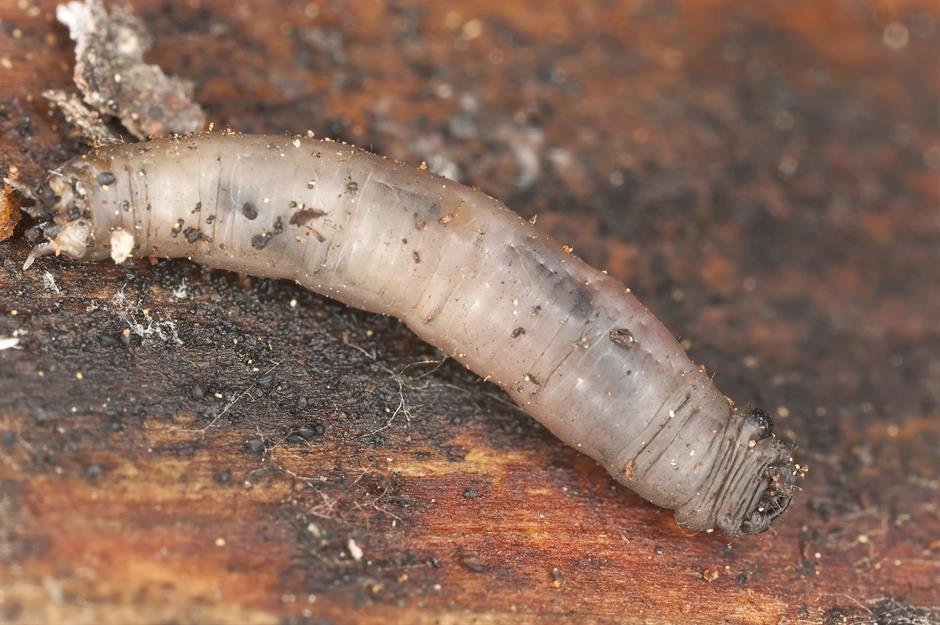
Does your lawn feature patches of dead grass? If so, there’s a chance you have a leatherjacket infestation. These unpleasant critters are the larval stage of crane flies – AKA daddy-longlegs. “Crane flies lay their eggs as larvae in autumn, then these larvae hatch and feed on the lawn throughout the winter before growing bigger and eventually turning into adult daddy-longlegs the following summer,” explains The Relentless Gardener.
They are usually brown, grey or black, their skin is leather-like and they have a very distinctive head. Leatherjackets love grassroots and will munch away, causing the lawn to turn yellow and die.
To identify an infestation, dig up a small patch of lawn. "If you find five to six grubs in one small section (approx 0.5m2) of the grass then it’s likely you have an infestation." So, how can you rid your garden of these larvae?
Leatherjackets: treatment
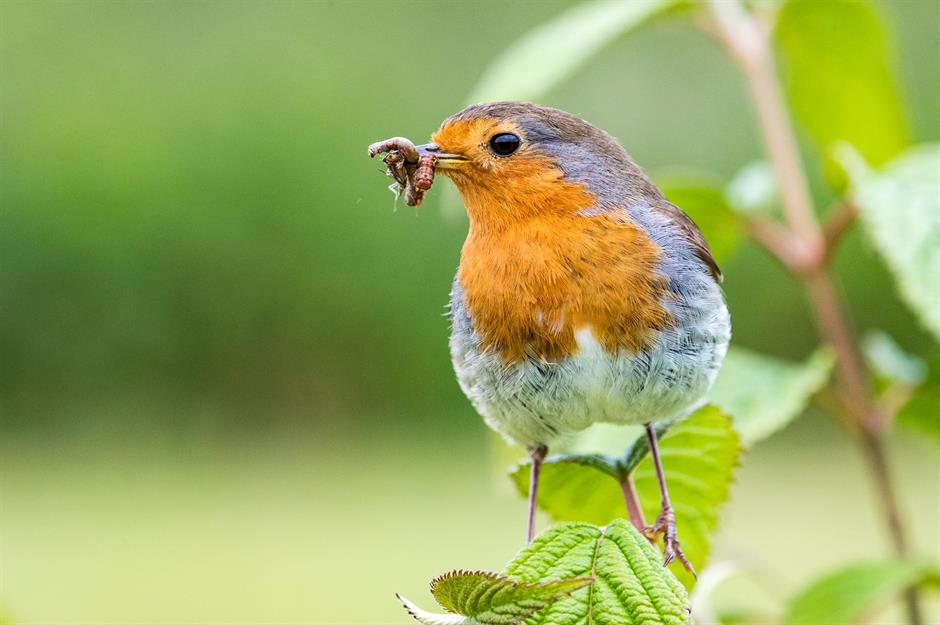
Sadly, no chemical treatments will help an infestation, so prevention is your main option. You can simply allow birds and other predators, like badgers and hedgehogs, to eat them – or use nematodes.
Nematodes, or roundworms, can be purchased online. Apply them to the lawn when temperatures are above 12°C and less than 20°C. “They will latch onto the larvae and kill them," The Relentless Gardener says. "The best thing is that nematodes won’t cause any harm to anything else so they are environmentally friendly too."
Garden pest: maybugs
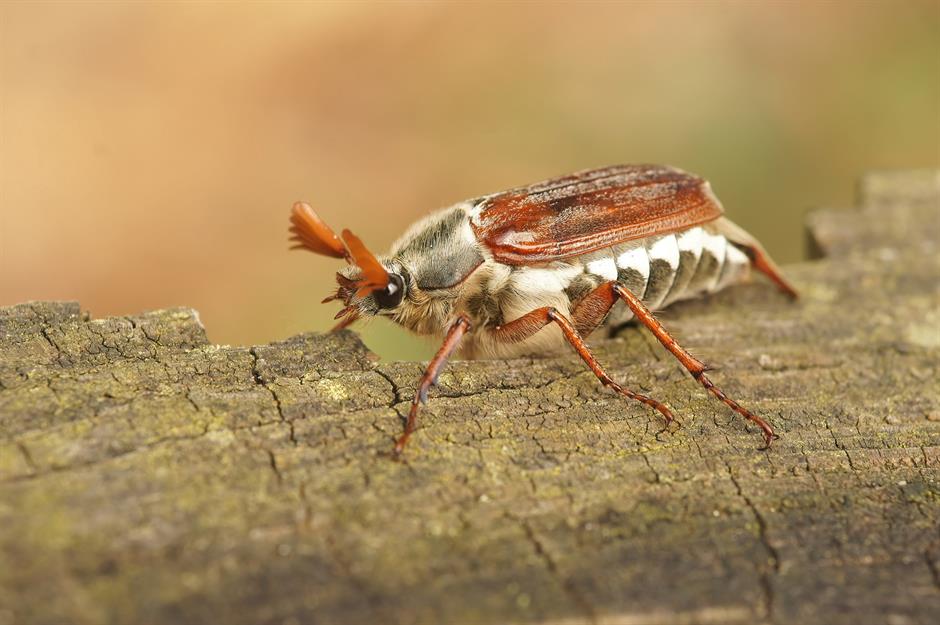
They may look rather pretty, but maybugs are bad news for your garden. These common pests are known to be a nuisance since they have a tendency to chew on leaves and flowers. Adult maybugs can be identified by their large brown-coloured, slightly hairy bodies, wings and long antennas.
“The six-legged critters also make a loud buzzing sound," Chris Bonnett, founder of GardeningExpress.co.uk, says. Plus, if they’re left to fester in the garden, they can cause “severe damage to plants, flowers and grass”, to the point where the space is untreatable.
Maybugs: treatment
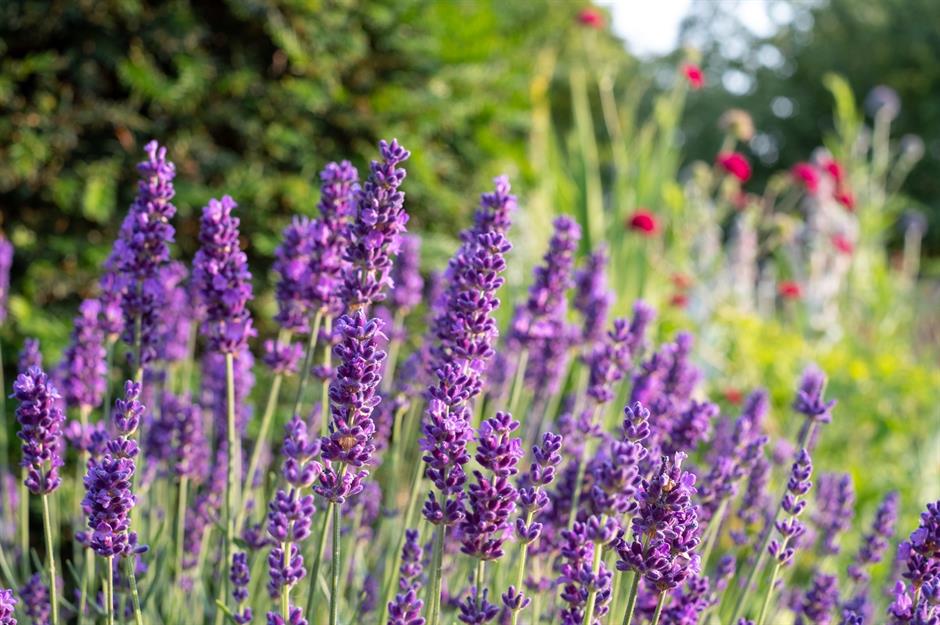
Thankfully, there are a few ways to ensure your garden remains maybug-free. They can be scared away by spraying lavender-scented products around plants and flowers. You could create your own by mixing lavender essential oil with water, or purchase a ready-made spray.
"Make sure to also keep windows shut at night to prevent them from coming inside as they’re attracted to light," GardeningExpress.co.uk suggests. It isn't just the adults you need to worry about, either...
Garden pest: chafer grubs
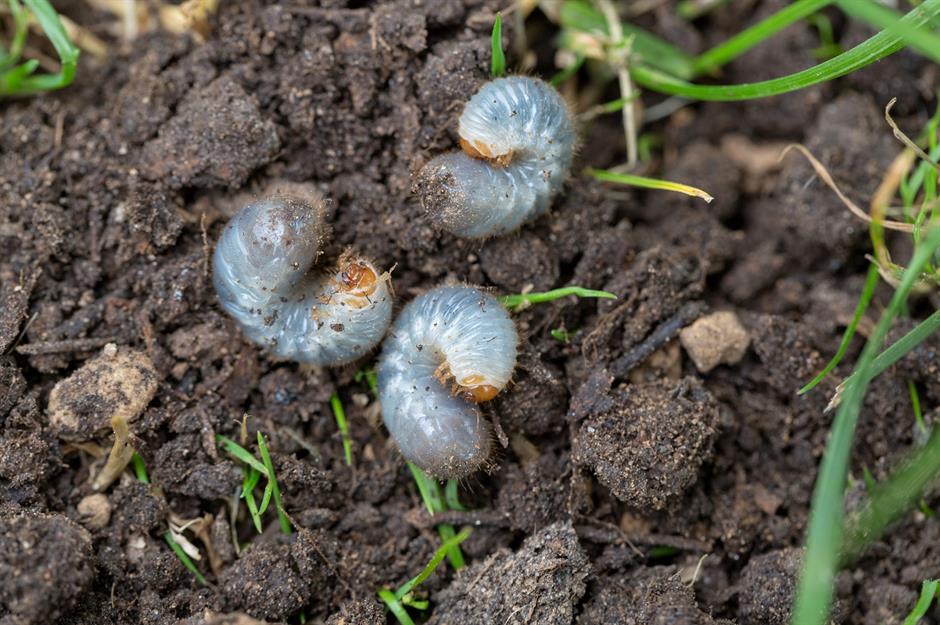
Chafer grubs are the larvae of maybugs and live in the soil until they become adults, according to The Relentless Gardener. The grubs have C-shaped, creamy-white bodies, orangey-brown heads and six legs. They feed on the roots of grass, causing extensive damage.
They can remain in the soil for several years and in late summer or early autumn, they "pupate and eventually emerge as adults the following spring". Again, dig up a patch of grass to find out if you have an infestation.
Chafer grubs: treatment
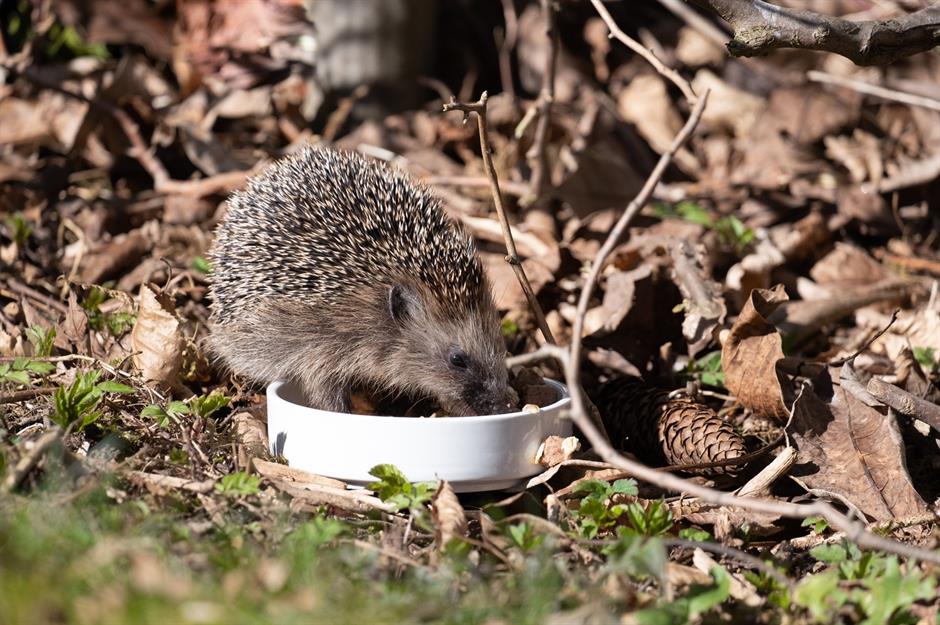
As with leatherjackets, the only way to tackle chafer grubs is through prevention. Birds, badgers and hedgehogs will all feast on them. Grubs can also be brought to the surface by watering the garden at night and covering the damp area with a blanket or sack. "By the morning they’ll appear on top of the soil," GardeningExpress.co.uk says.
Alternatively, you could introduced nematodes to your yard. “However, if nematodes are to be successful against leatherjackets or chafer grubs, then they need to be applied while the larvae are super small (not when they are just about to turn into adults),” The Relentless Gardener confirms. “Late winter/early summer is too late for applying nematodes, while autumn is the perfect time.”
Garden pest: foxes
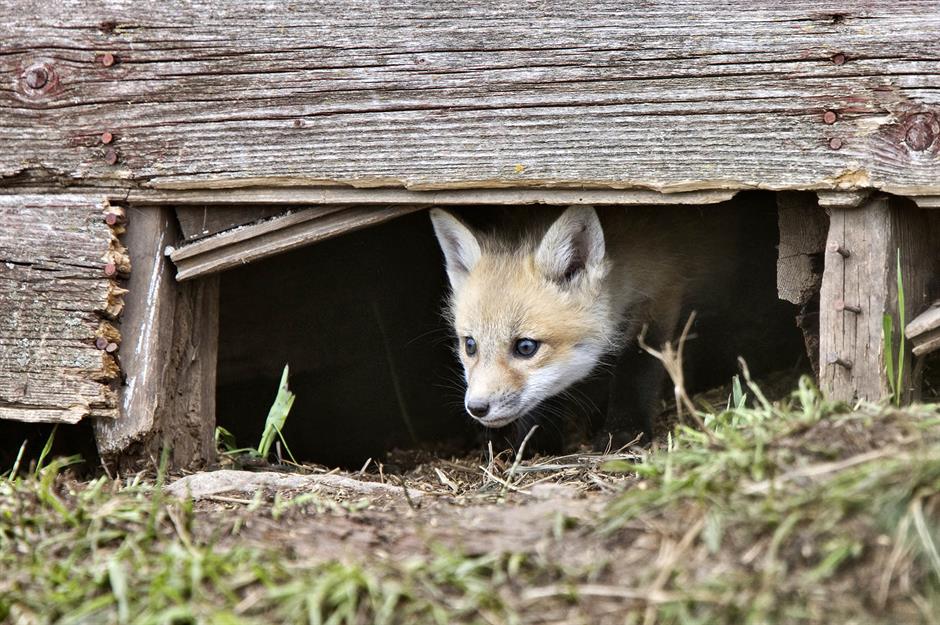
Foxes are beautiful and beguiling, but during their mating season – each January – they can exhibit more adventurous behaviours as they search for mates and look to secure dens for raising their young. These habits can bring them closer to human habitats and cause unexpected and expensive property issues.
Prolonged digging under structures like porches, decks and sheds can weaken foundations and cause structural damage over time. Likewise, a family of foxes coming and going can destroy your lawn and carefully tended flower beds.
So, where should you look? Foxes are brilliant climbers, so search your roof or attic space. The area beneath porches and decks is an excellent spot for a mother fox to raise her cubs, so be on the lookout for any signs of disturbance. Foxes can also use drainage pipes and ditches as pathways or hiding spots, while open sheds, garages and greenhouses make for cosy shelters.
Foxes: treatment
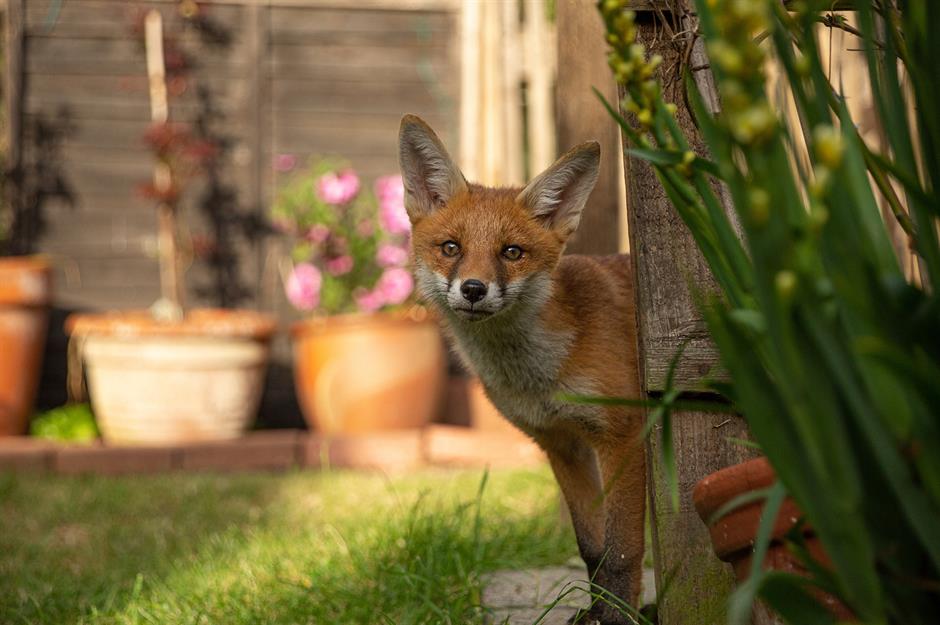
The goal is to deter foxes, not harm them. With that in mind, the RSPCA recommends humanely deterring foxes by using bird feeders designed not to spill food onto the ground, protecting fruit and veg crops with solid weld-mesh and promptly clearing up any fruit that falls from your trees.
Fish, blood and bone fertiliser can also attract foxes, so consider switching to a plant-based product. Additionally, securely seal dustbins with clip-on lids and never leave rubbish out in bags that foxes can easily break through.
If a fox has already made its burrow, it's best to wait until after the cubs have left the den in late summer, before actioning any of the above deterrents. You can encourage the mother fox to move her cubs by making noise and walking nearby. Once she's moved on, take the above recommendations to deter her return. Remember: it is illegal to poison foxes.
Garden pest: mice and rats
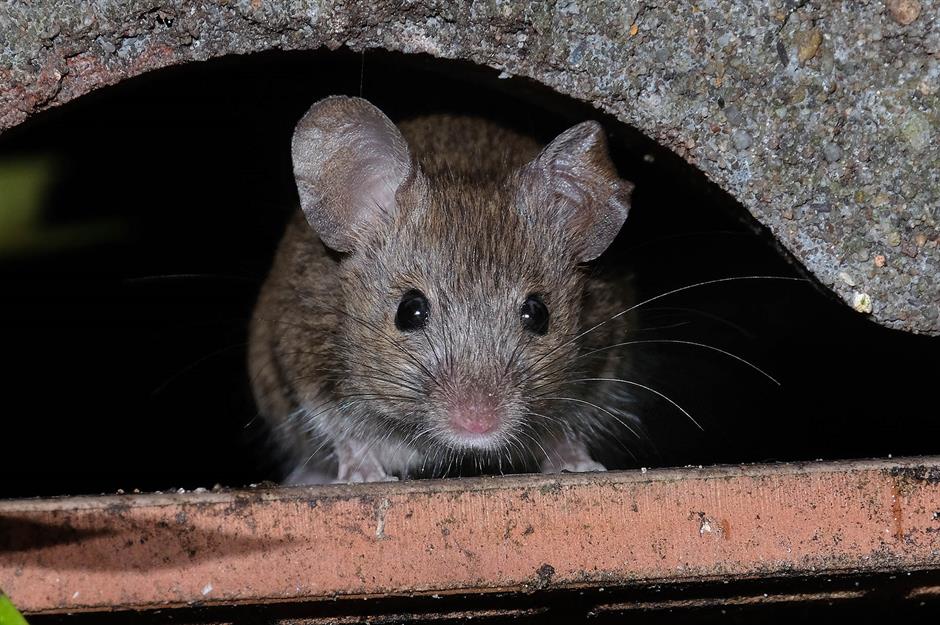
Mice and rats can carry diseases, including Hantavirus, Listeria and Salmonella. Property damage is also a risk, as rodents love to gnaw on almost anything. They can cause damage beneath floorboards and inside walls, cause flooding by nibbling holes in plastic pipes and can even reduce your home's energy efficiency by tunnelling through insulation. Rodents can also gnaw through the plastic coating on electrical wire, which can be a fire hazard.
A home for a mouse or rat is anywhere that will provide food, shelter and water. According to the British Pest Control Association, late summer and autumn are the most common times for rat problems, as this is when they go in search of food to store and build their nests for winter. Even worse, having a severe rat infestation could devalue your home by as much as 20%, if they get inside, according to the home insurance experts at Quotezone.co.uk.
Mice and rats: treatment
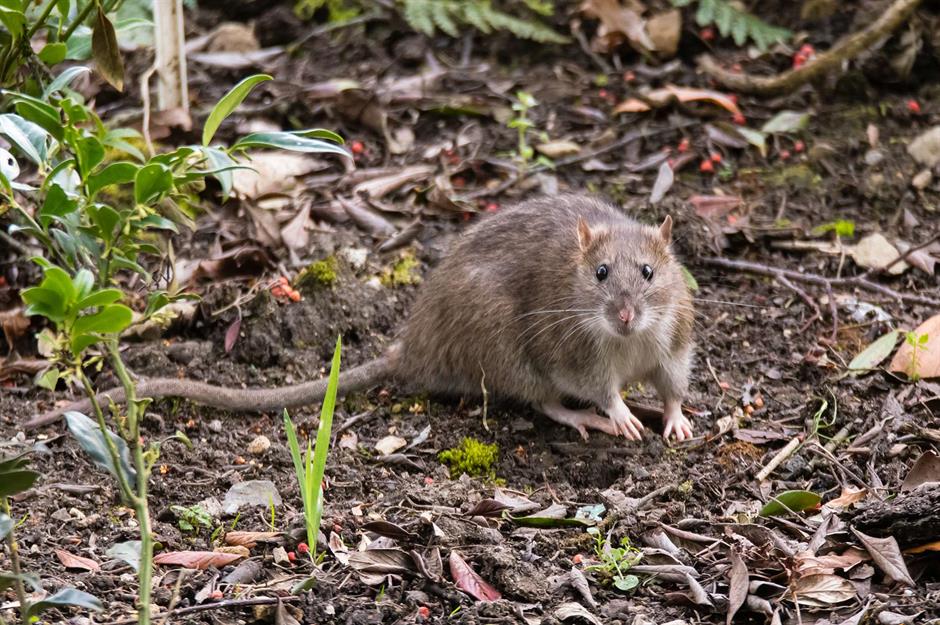
If you see evidence of rodent activity outside, the key is to respond quickly as if they're in your garden, they’ll likely also try to get inside your home.
You’ll need to keep your bins secure and clean away anything edible outside that’s tempting them, including bird or other animal feed. It might also be time to tidy up the garden – keep grass short, cut back overgrown areas and declutter storage spaces where rodents could be hiding. You could even grow plants that deter pests, such as marigolds or mint.
As well as blocking any possible entry gaps in your property such as around pipes or under external doors, you'll also want to seal holes in garden buildings and even decking – a favourite sheltering spot for rodents. Additionally, ultrasonic equipment or humane traps can help keep pests at bay.
Garden pest: alder leaf beetle
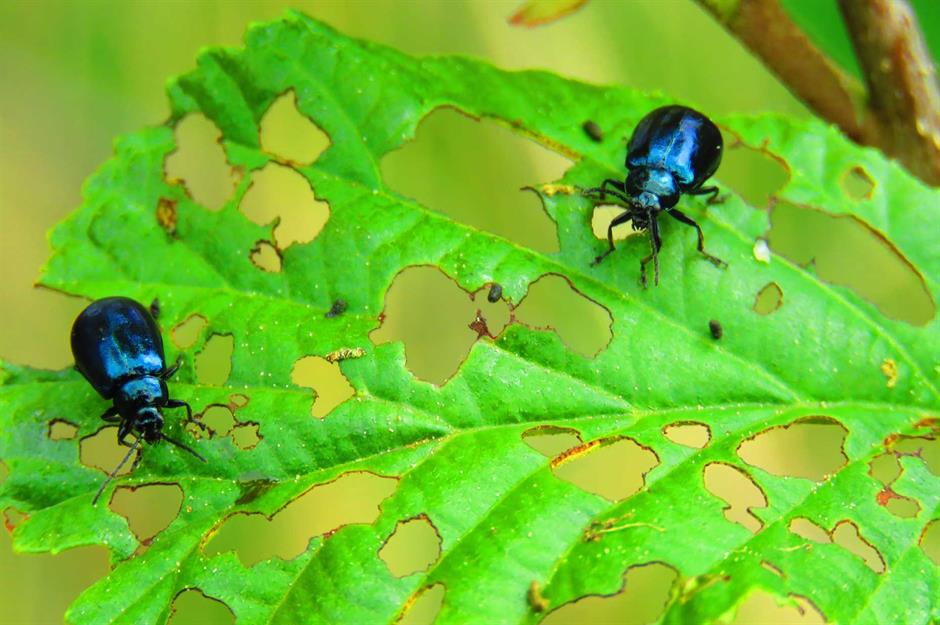
This metallic, navy beetle loves nothing more than feeding on deciduous garden trees like beech, hazel, hornbeam and, of course, its namesake, alder.
Emerging in the spring, its calling card is defoliated or bitten leaves, though it’s worth saying that alder leaf beetles are unlikely to affect the long-term health of the trees they feed on.
Alder leaf beetle: treatment
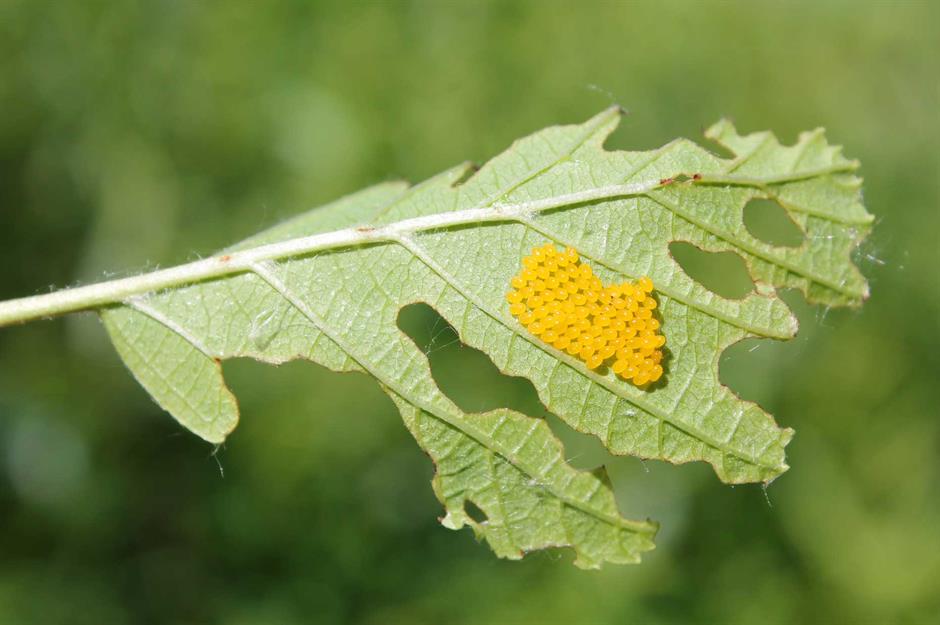
While it can be difficult to treat an infestation on taller trees, you may be able to control the spread of these hungry beetles with an organic insecticide containing natural pyrethrins.
Pesticides, however, are more likely to be successful at tackling the bug's bright yellow eggs (pictured) and larvae, rather than adult bugs.
Garden pest: southern green shield bug
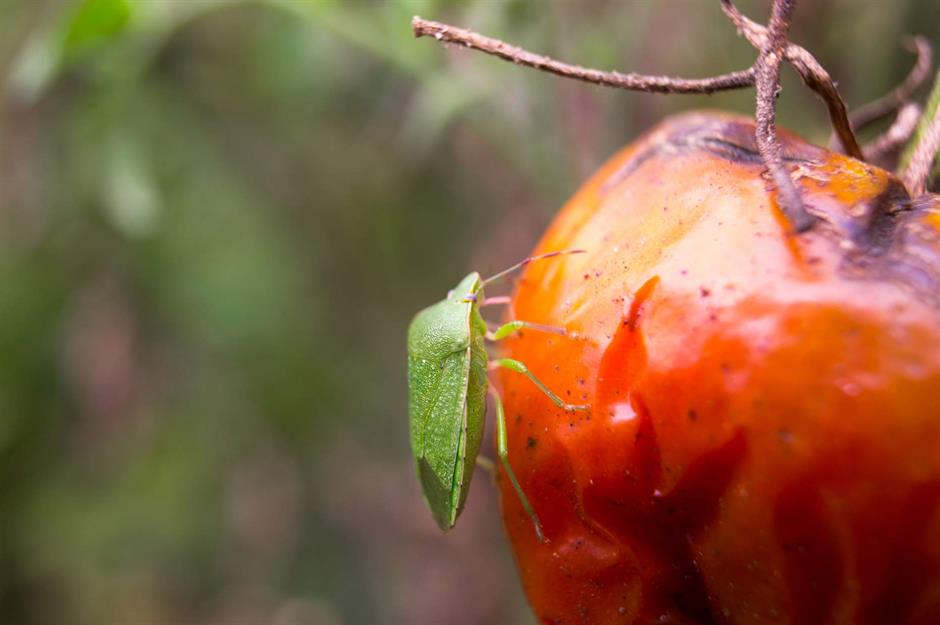
A small but deadly European critter, the southern green shield bug, also known as the southern green stink bug, can devastate fruit and vegetable plants including tomatoes, runner beans and raspberries.
Feeding on the sap of these kitchen garden favourites, they cause odd, misshapen produce to grow, creating a similar effect to some garden diseases and disorders.
These vibrant green insects are found across Europe, Asia and Africa, as well as in the south and east of the United States.
Southern green shield bug: treatment
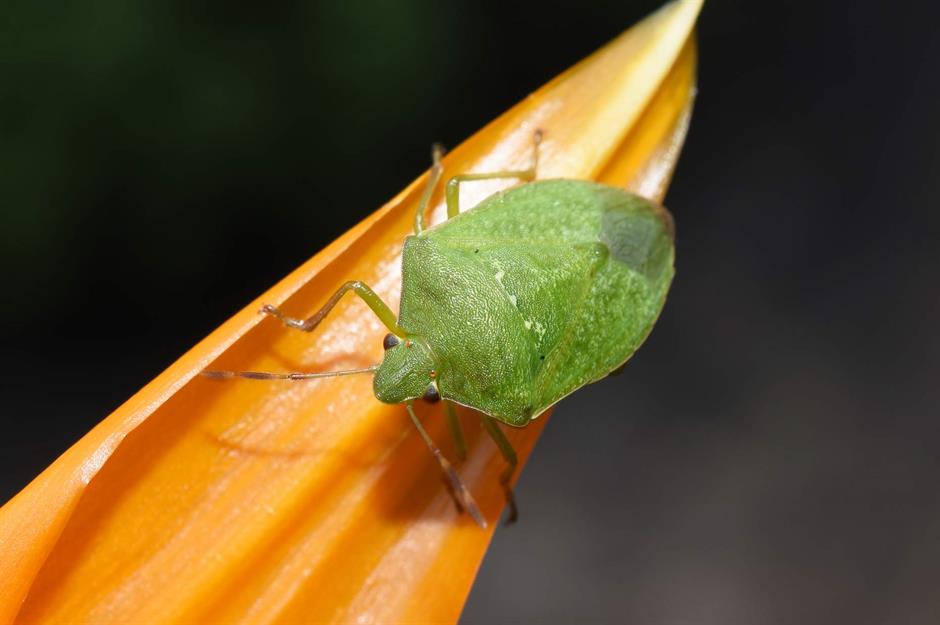
When it comes to ridding your garden of these invasive bugs, you can spread fly tape around your plants to catch them before they reach your crops.
You can even use the hose attachment on your vacuum cleaner to suck the critters up, but remember to replace the vacuum bag and clean it out thoroughly afterwards.
Garden pest: moles
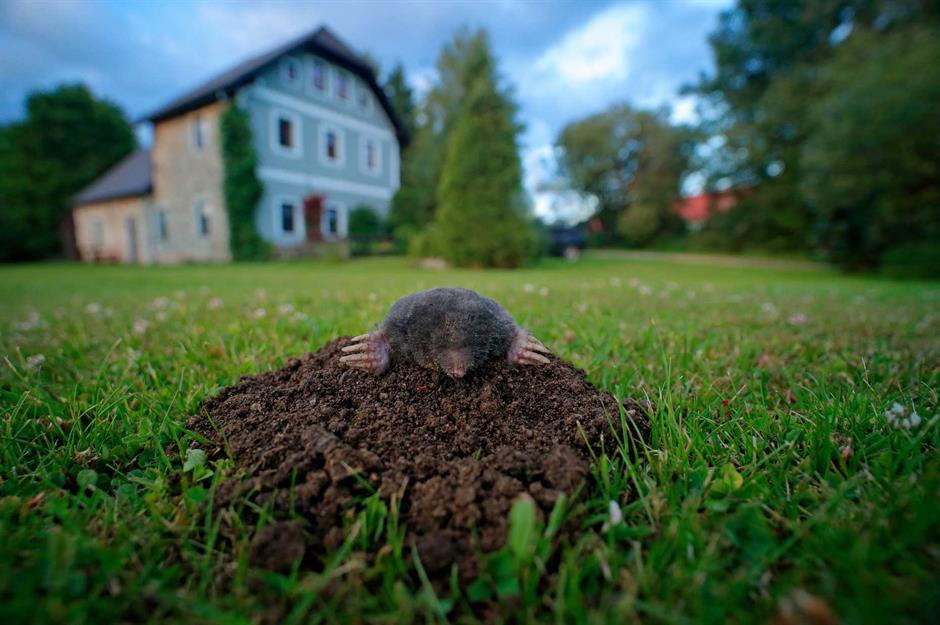
While their diet is strictly earthworms, grubs and insects rather than your prized plants, these underground animals can wreak havoc across lawns and flowerbeds with their prolific burrowing, as well as harming the root systems of growing plants.
With the ability to dig up to 20 metres a day, the tell-tale sign of a resident mole is small piles of soil dotted across your garden. Moles are usually most active in late winter and early spring, the RHS explains, and they are very territorial. In many cases "the molehills seen in a garden are the activity of just one individual".
Moles: treatment
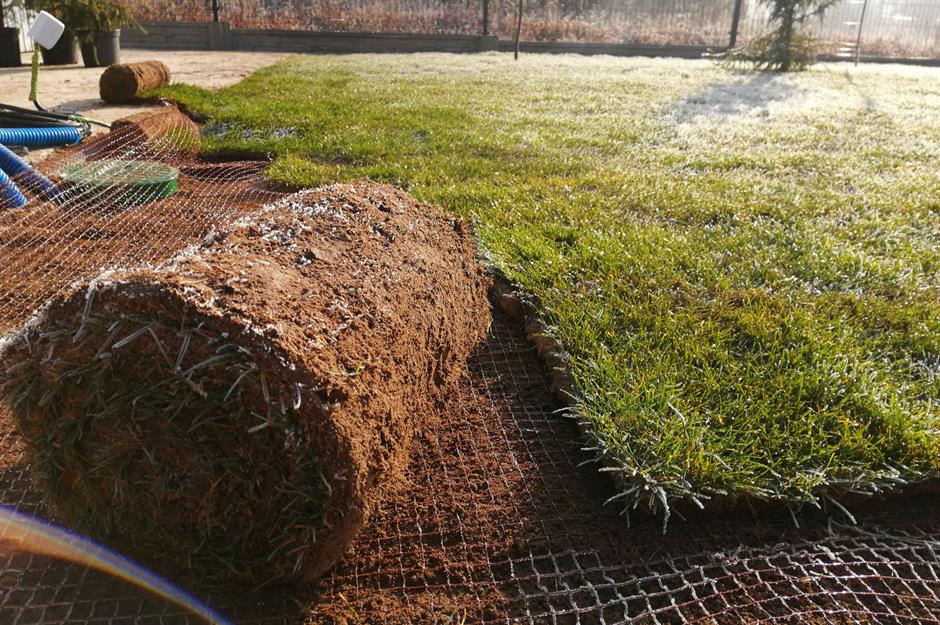
Luckily, when it comes to reclaiming your lawn, there are some natural and humane repellants you can try before calling in a specialist pest removal company.
Plants including marigolds, daffodils and alliums deter moles, so a planting barrier may succeed in sending these subterranean pests scurrying in the opposite direction.
Another option is an anti-mole net (pictured), although these should be installed across bare soil before laying or seeding a new lawn.
Garden pest: vine weevils
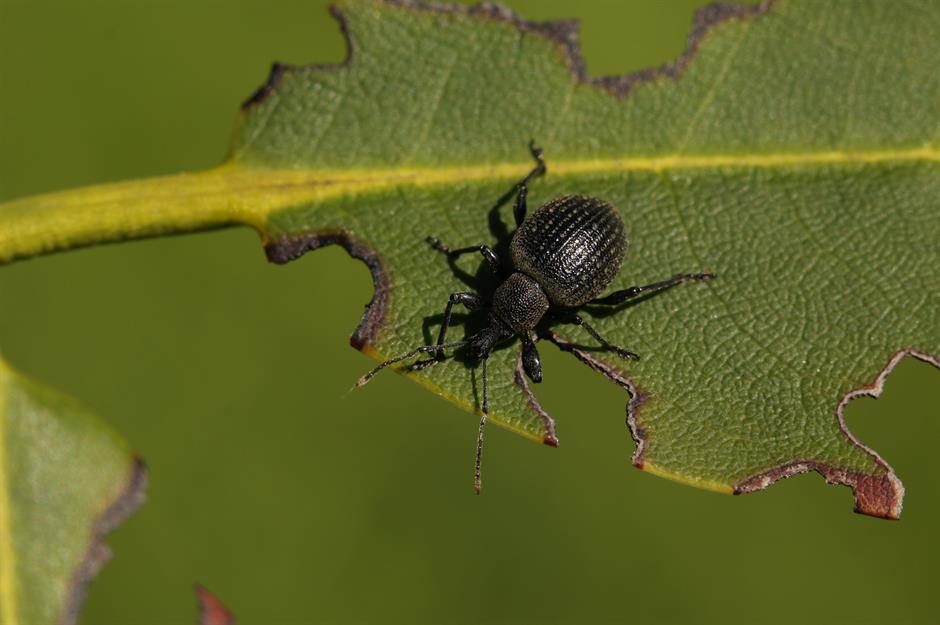
This is a critter that carries out its dirty work in two guises. Firstly as a black beetle munching through leaves, and secondly, and perhaps more sinisterly, as fat, grub-like larvae buried down in the soil, feeding off the roots and killing plants away from watchful eyes.
Vine weevils: treatment
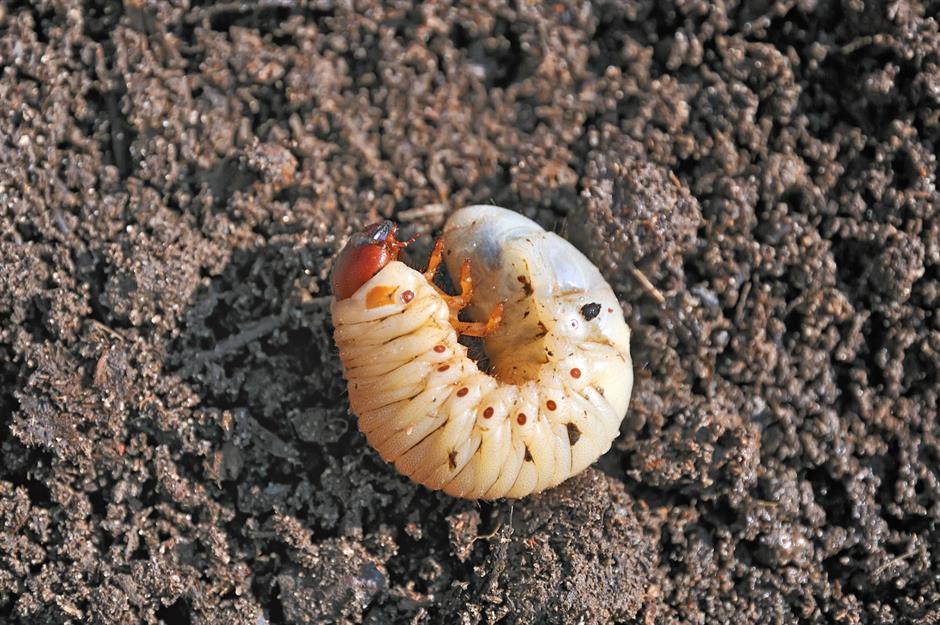
Don your head torch and find the beetles at night; they tend to favour plants in containers. Pick them off or shake the plant into an umbrella. You can also check in the soil for larvae should you feel brave. A better option would be to use nematodes; an increasingly popular and safe method.
These microscopic worms are watered into your soil to kill the beasties from the inside. Nice! Failing this, insecticides are available for use on ornamental plants in containers only.
Garden pest: cabbage white caterpillar
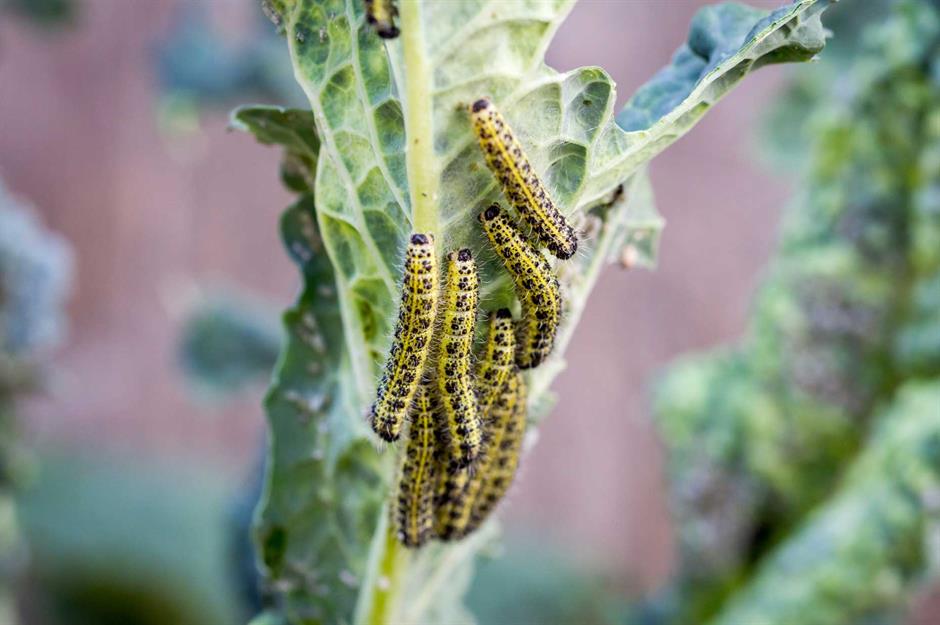
You may have spent all summer growing your own vegetable garden, but this very hungry caterpillar enjoys nothing more than munching the leaves of cabbages and other brassica plants, including cauliflower, kale and broccoli. Active between June and September, they can have a devastating impact on your patch.
Cabbage white caterpillar: treatment
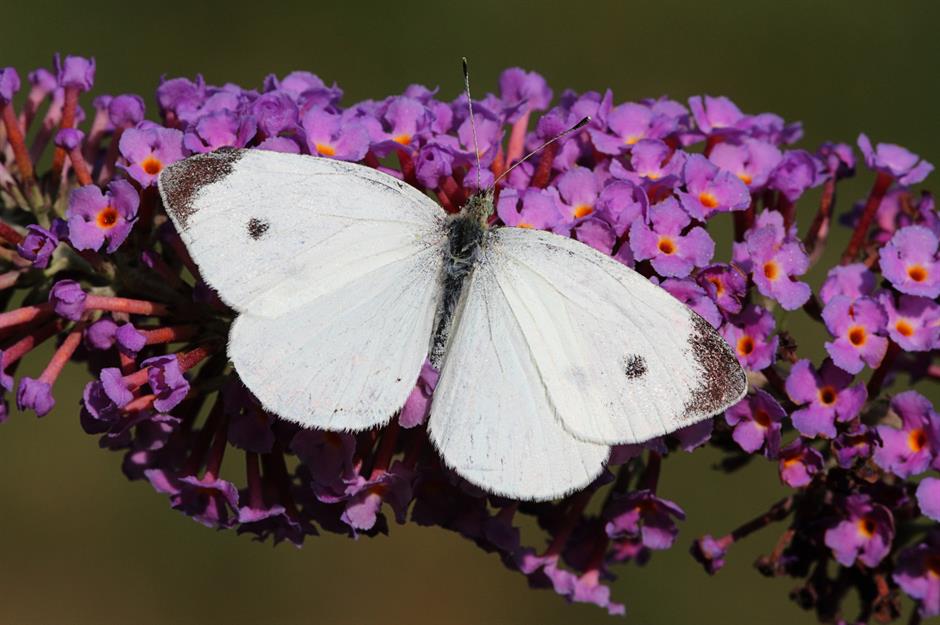
Net your brassicas to stop cabbage white butterflies from laying eggs on them in the first place. When you spot the caterpillars, pick them off and leave them somewhere for the birds to feast on.
Chemical treatments are available but these are then passed on into the food chain. It's better to use a nematode spray on the leaves in the evening, which infects the caterpillars with a bacterial disease. Who said gardening was a gentle pastime?
Garden pest: aphids
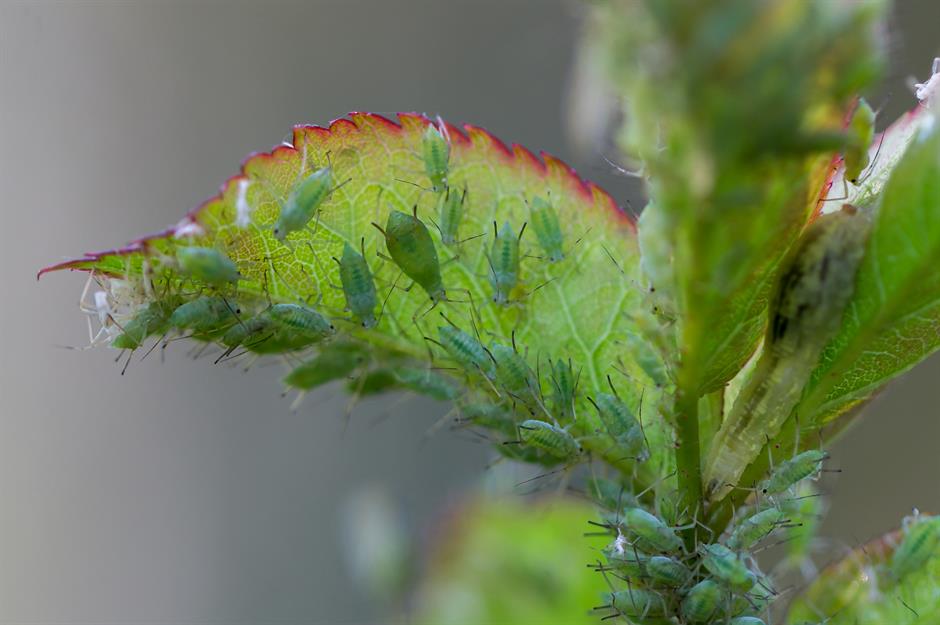
These sap-sucking little devils form large colonies very quickly and can spread infections, too. "The sap sucking can cause a lack of plant vigour, distorted growth and often excrete a sticky substance (honeydew) on which sooty moulds can grow," RHS Gardening explains.
There are a large variety of species including blackfly, greenfly, woolly aphid, peach potato aphid and many more. RHS Gardening explains that they should be tolerated where possible as they "are a vital food source for a wide range of wildlife in the garden". However, if you do decide to control aphids, there are ways you can cause the least harm to the environment.
Aphids: treatment
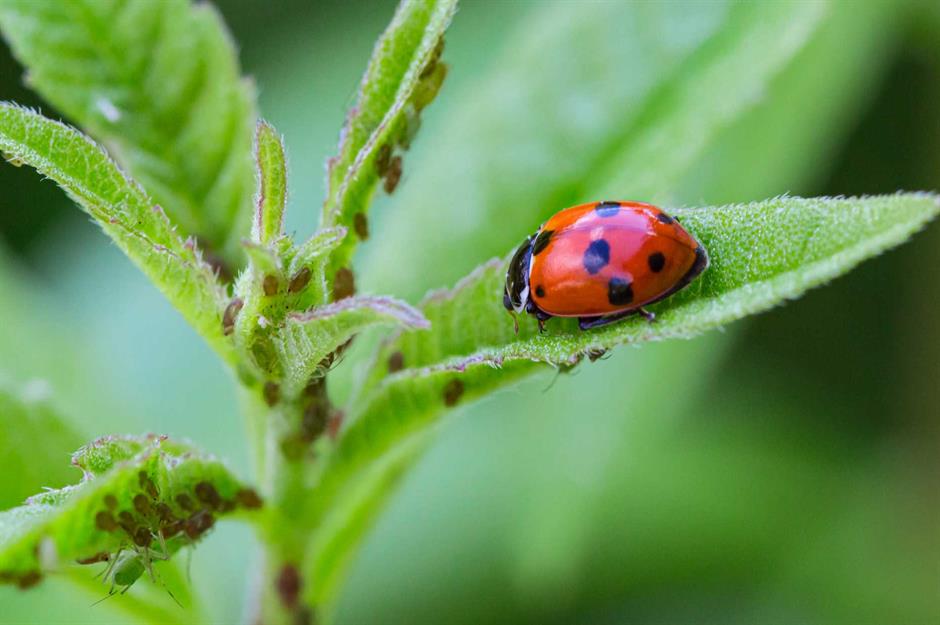
You can squash them, dislodge them with a hose, shake them off onto a sheet or spray them with a washing-up liquid solution. You can also encourage the aphid’s natural predators, such as ladybirds and lacewings, with nectar-rich flowers or herbs – pollinators like bees will thank you, too – or purchase their larvae and introduce them as a biological control.
"Don’t bother attempting control of aphids on trees as they are considered part of the biodiversity trees support and natural enemies will normally reduce numbers," RHS Gardening says. There are many different insecticides available, but read the instructions carefully and take precautions if you have pets or small children.
Garden pest: fuchsia gall mite
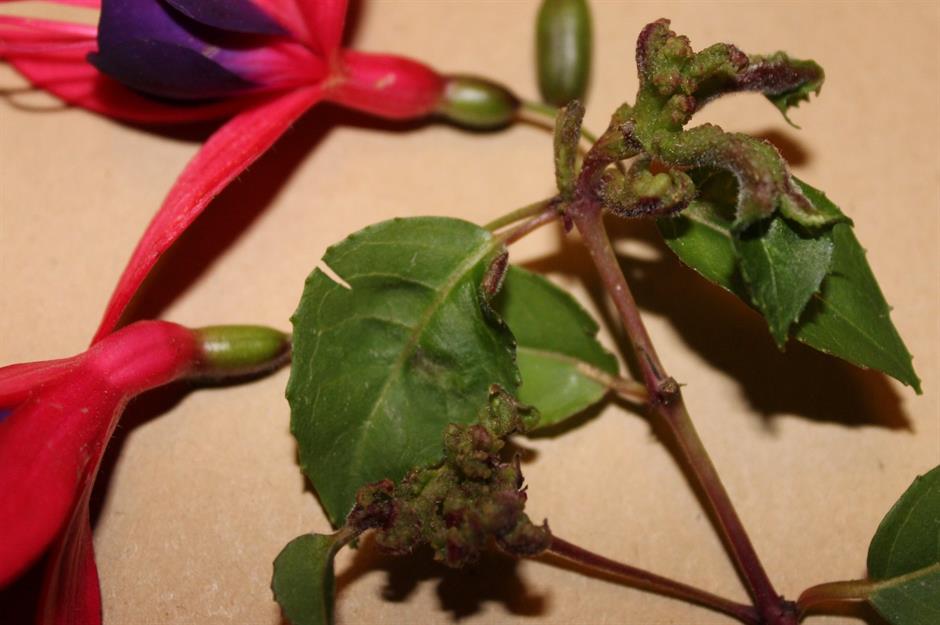
As any gardener knows, flowerbeds are the perfect way to add a splash of colour, especially if you're starting a new garden from scratch.
However, this microscopic mite infests the young shoots at the top of the fuchsia, sucking its sap and distorting the foliage as well as causing abnormal growths from the chemicals it injects.
Fuchsia gall mite: treatment
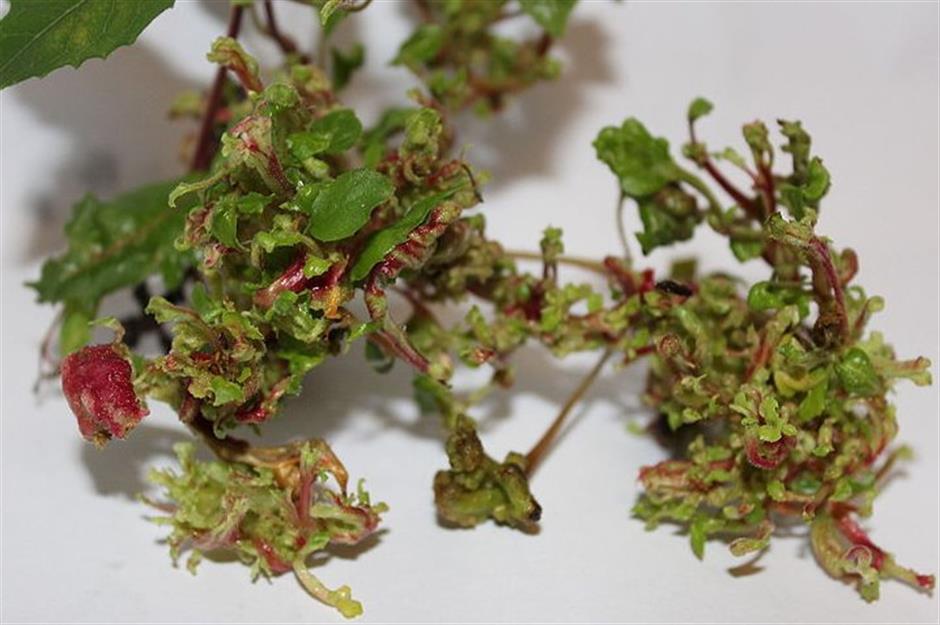
Gall mites are resistant to pesticides so in an attempt to reduce the problem, remove any infected areas and either burn them or put them in the household waste.
Choose species that are more resistant to infection from these little devils, such as 'Baby Chang', 'Cinnabarina', 'Miniature Jewels' and 'Space Shuttle'.
Garden pest: lily beetle
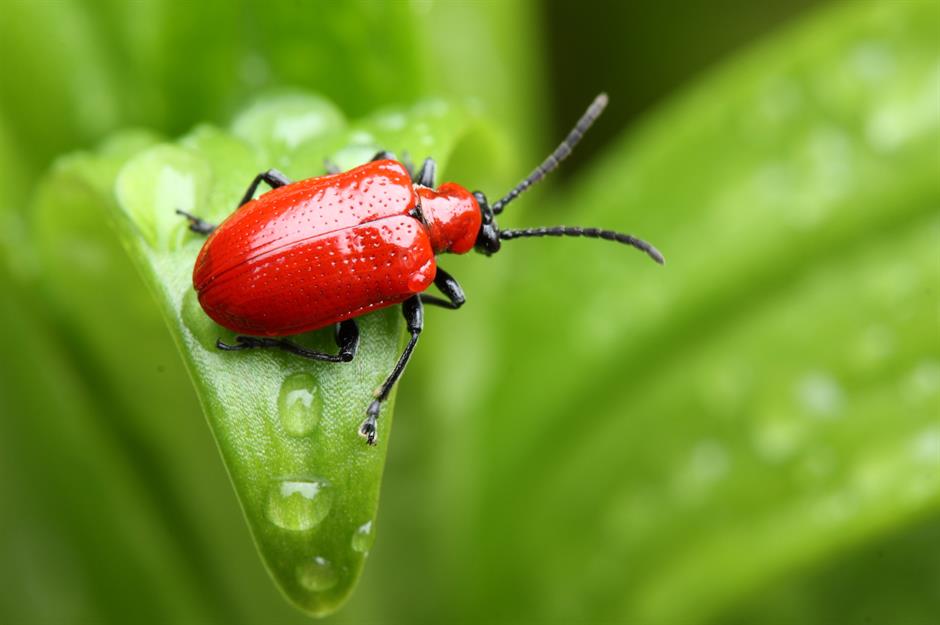
A pretty bright red beetle that loves to take up residence on lilies, these colourful critters are not hard to find, but they're pretty hard to catch.
Known for devouring leaves, if not entire plants, these little Houdinis jump and disappear when they sense danger, leaving a trail of destruction in their wake.
Lily beetle: treatment
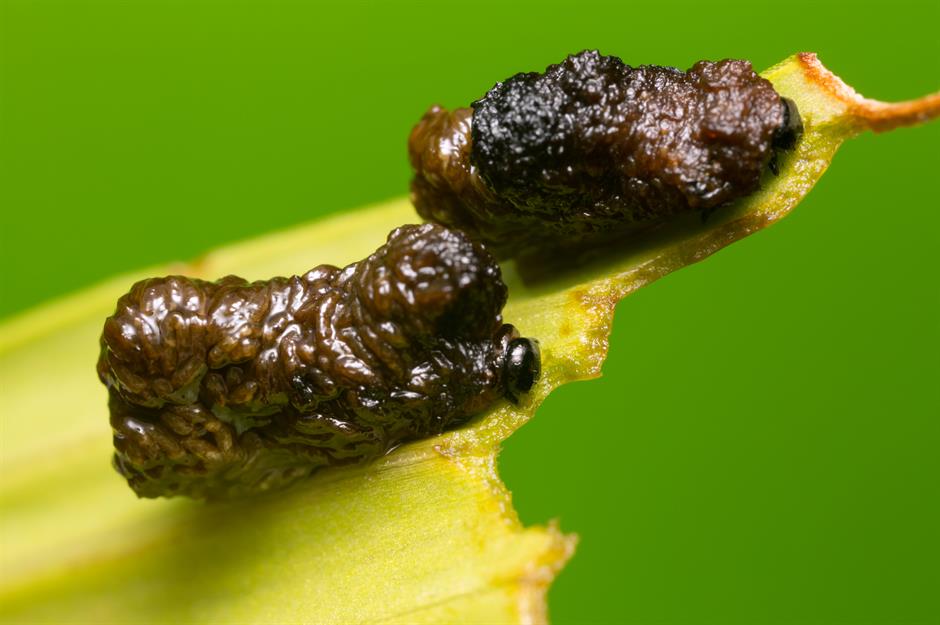
Take them by surprise and squash them. Brutal, but the larvae they produce are coated in black excrement and also feed on the leaves, causing serious damage.
Less time-consuming treatments include spraying neem oil, a natural insecticide, onto the leaves to kill larvae and repel adult bugs. Imidacloprid, a synthetic insecticide, can also help prevent infestations when applied to the surrounding soil in early spring.
Garden pest: pigeons
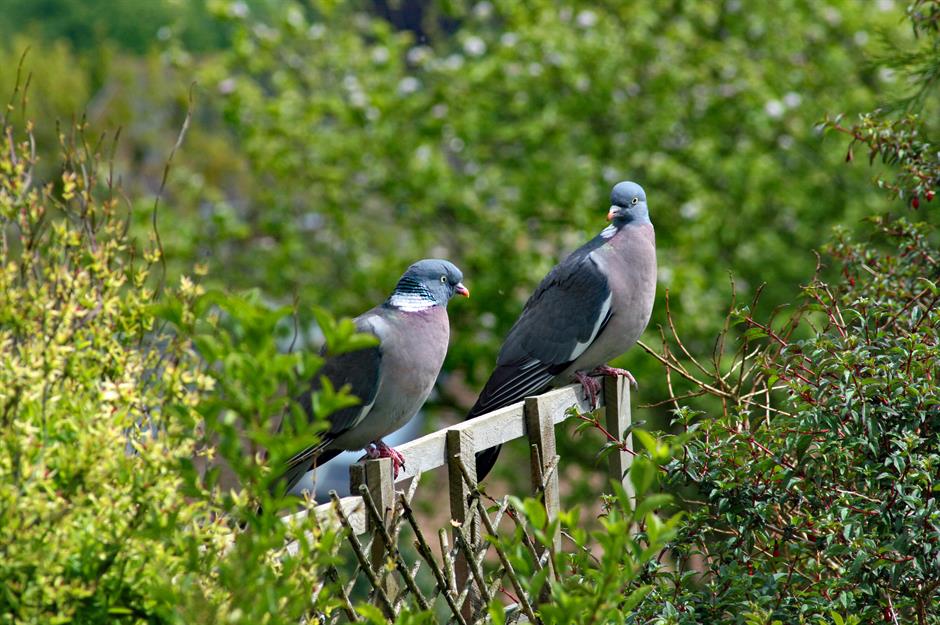
Growing your own food is one of life's simple pleasures but many a plot has been decimated by hungry pigeons.
In particular, they enjoy eating the leaves of cabbages and making their way through everything from cauliflower, Brussels sprouts and broccoli to peas and cherries.
Pigeons: treatment
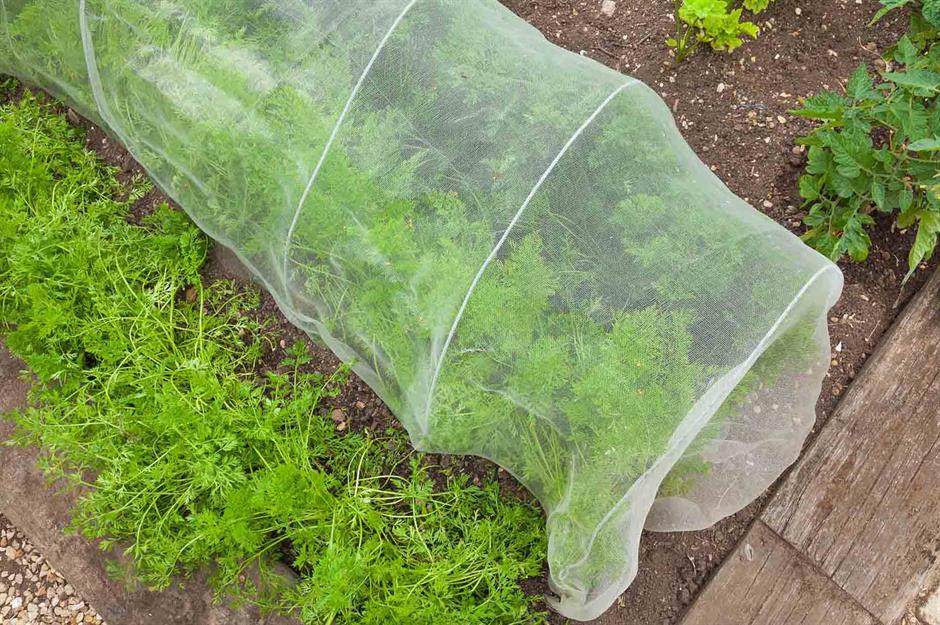
To fend off these winged opportunists, it's best to put netting around young plants at the beginning of the season, or even a small polytunnel if you have the space.
Birds are most active during early summer, feeding on the young growth, so be sure to get protection in place early.
Garden pest: rabbits

Cute, yes, but rabbits can cause extensive damage by nibbling away at a huge range of plants and crops, digging holes and scraping up the lawn. They favour young growth and gnawing at bark, which can ultimately kill the shrub or tree.
Rabbits: treatment

Keep these fluffy visitors at bay by installing a wire fence around the garden or netting around certain plants.
Grow plants that rabbits aren’t partial to eating – think aromatic vegetables like onions, peppers and tomatoes, herbs including basil and oregano, plus plants like alliums and marigolds. If the problem persists, you could also try an animal-repellent spray.
Garden pest: glasshouse red spider mite
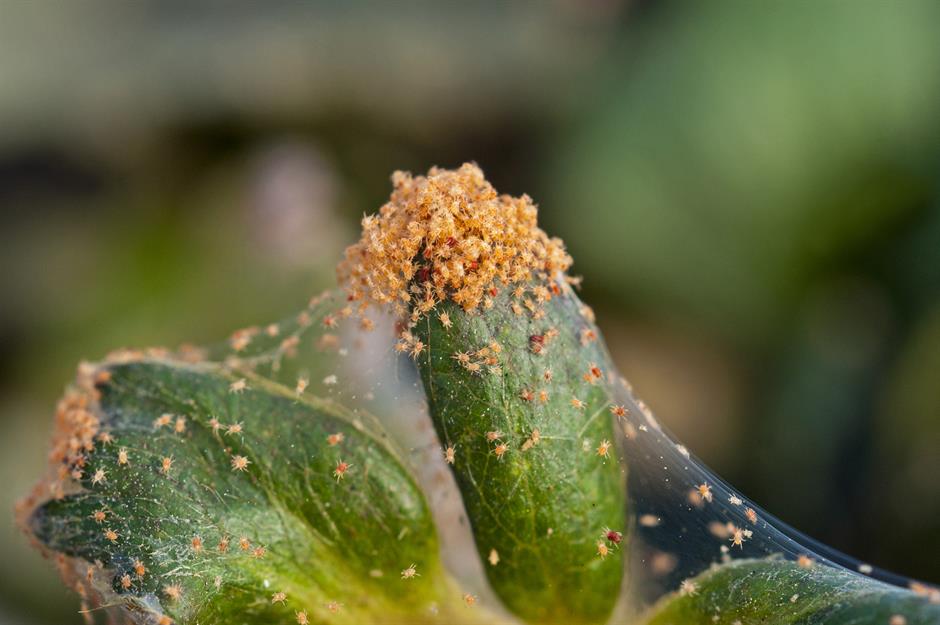
A red sap-feeding mite that exists in colonies, these tiny bugs strike primarily across greenhouses and house plants. They cause a mottled appearance on the leaves, leading to eventual leaf loss, and, in the case of heavy infestations, the plant may even die.
Glasshouse red spider mite: treatment

Good hygiene in your greenhouse will help fend off this blight; thorough annual cleaning with a disinfectant, removing debris, weeding around the structure and avoiding overcrowding plants may minimise the chances of an infestation. This won’t totally prevent these pests, but it will help.
An easy gardening hack is to introduce predatory mites or midges, which are available by mail order, as well as other natural predators like lacewings and ladybirds.
Garden pest: greenhouse whitefly
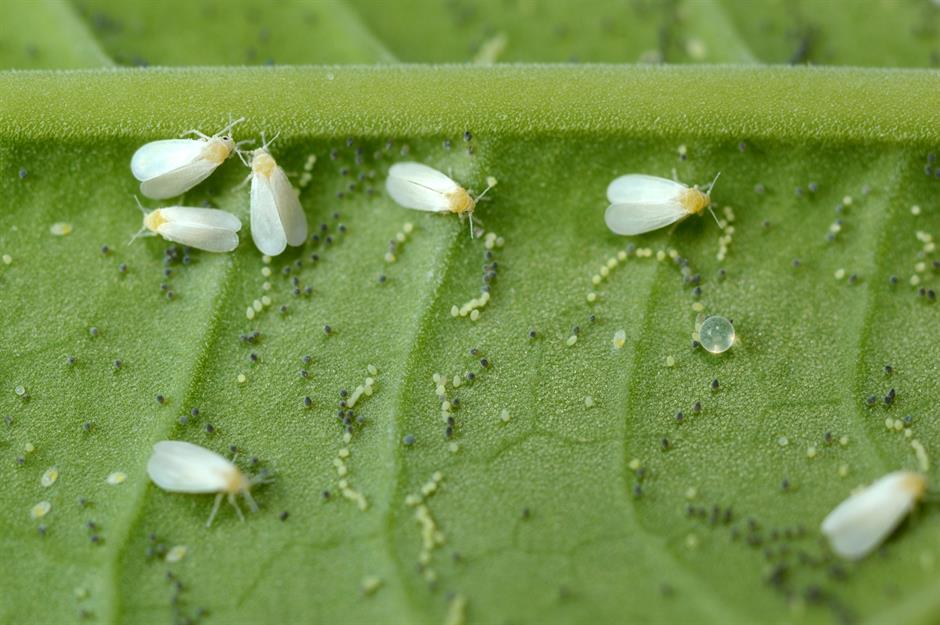
Another houseplant and greenhouse inhabitant, this sap-sucking insect leaves a honeydew residue on its victims, which turns into a black sooty mould. Active all year round, it feeds on edible and ornamental plants, reducing their vigour.
Greenhouse whitefly: treatment
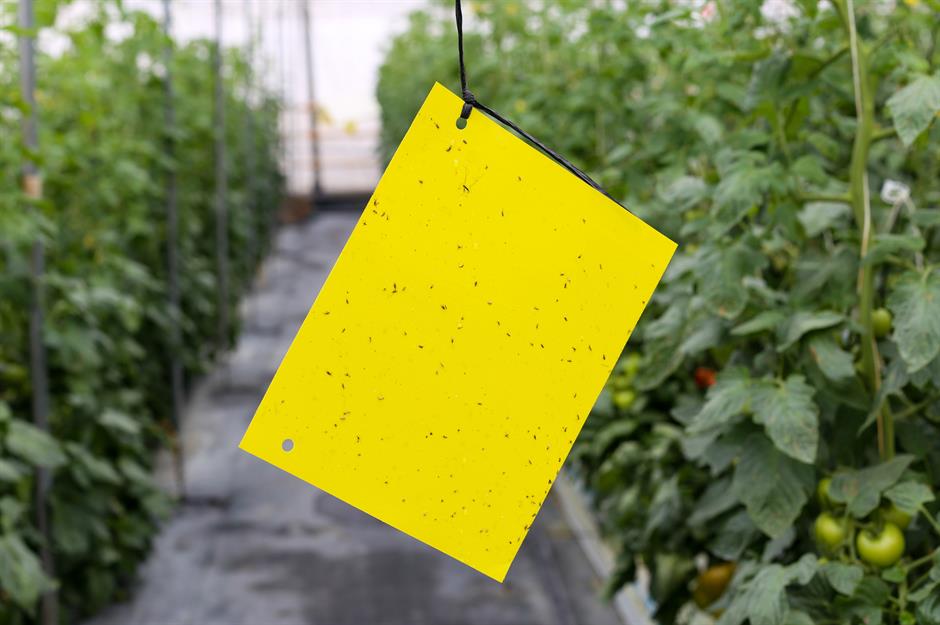
Make sure you have a clean greenhouse or cold frame and quarantine new plants before introducing them.
Hang sticky tape to catch these flying pests and consider a biological control in the form of tiny parasitic wasps that can help to tackle the infestation. Many chemical options are available but do check the instructions for correct use.
Garden pest: slugs and snails
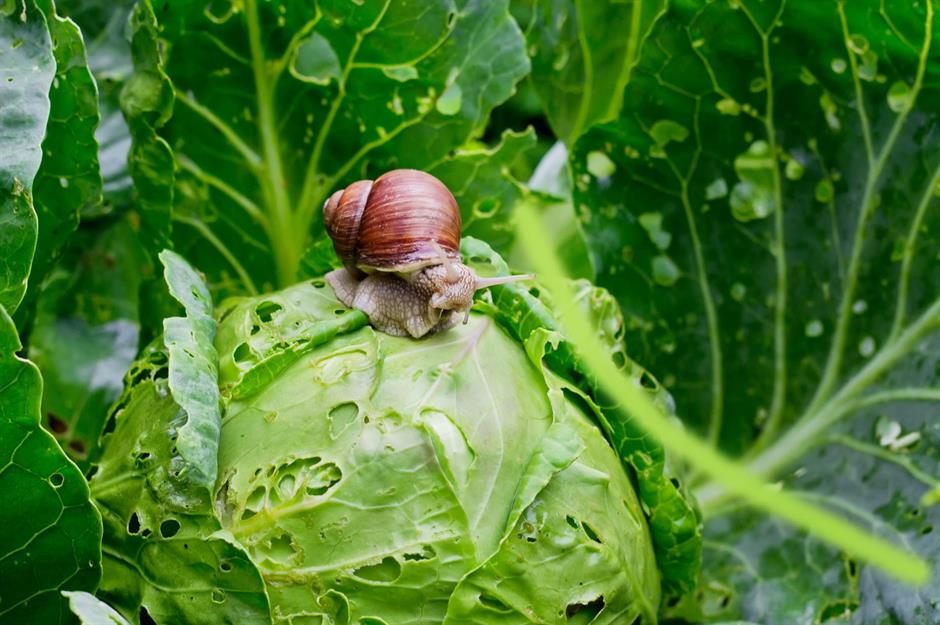
Probably the gardeners’ most hated and hunted pests, slugs and snails are slimy, downright ugly and seemingly unstoppable munching machines.
Thankfully, there are plenty of ways to fight back and reclaim your garden. It's a good idea to experiment and see what works best for you, but here are a few effective options...
Slugs and snails: treatment
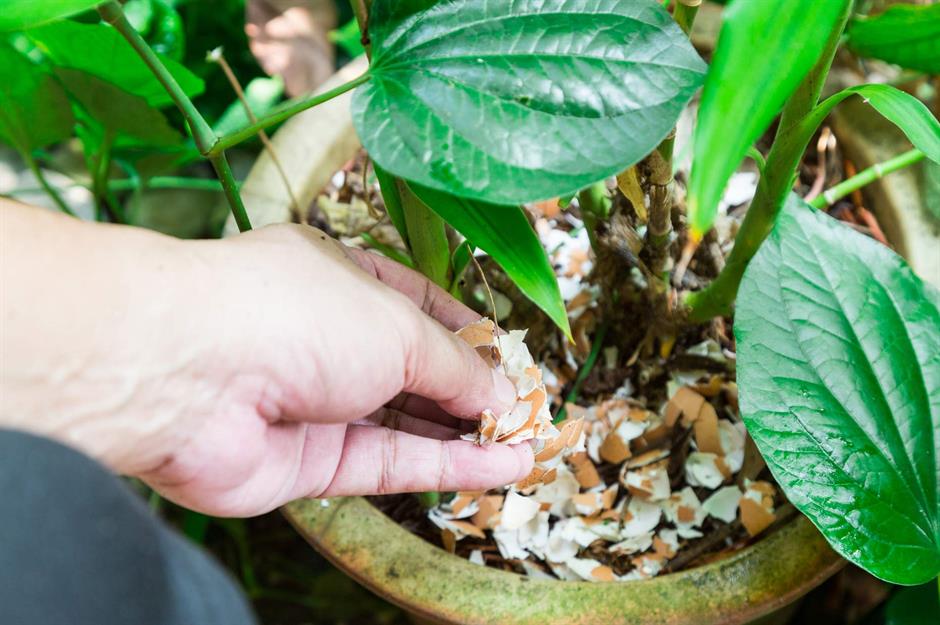
Whether it's potted plants or flowerbeds, create barriers around your plants with garden repellants such as coffee grounds, crushed eggshells, wood pellets or copper tape – you could even set beer traps.
Slug pellets containing metaldehyde are illegal in the UK. Instead, opt for natural solutions: “Try blending up garlic cloves mixed with water to create a strong solution. The scent of the garlic will naturally repel slugs once sprayed around your garden," Garden Buildings Direct suggests. “Slugs are also repelled by citrus fruits so place the peels and rinds of oranges, lemons and limes around the most vulnerable plants to stop any pest damage."
Nematodes (or roundworms) can also be introduced to destroy the larvae and encourage predators into your garden, such as frogs, birds and hedgehogs.
Loved this? Check out more gardening ideas and advice
Comments
Be the first to comment
Do you want to comment on this article? You need to be signed in for this feature